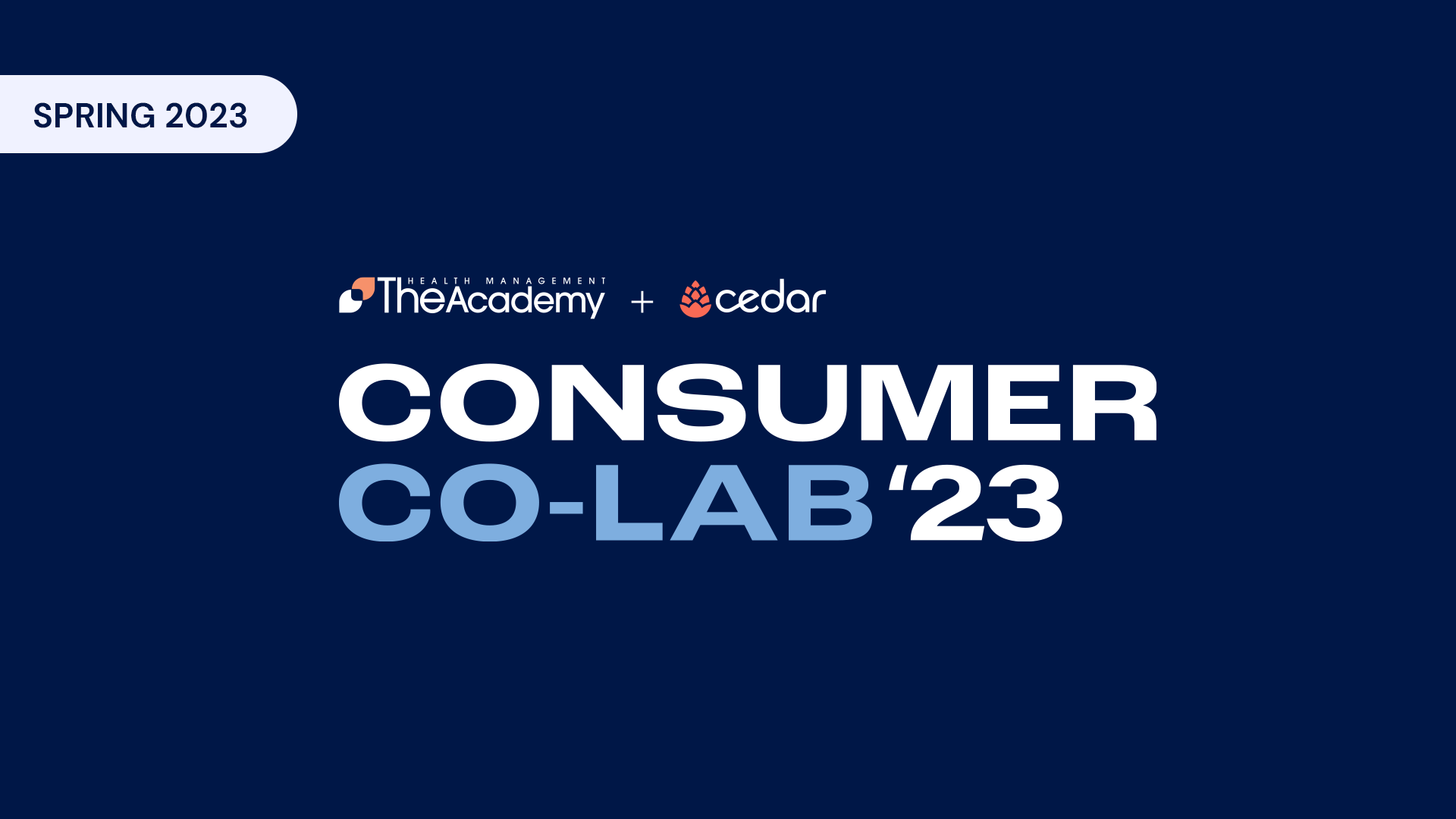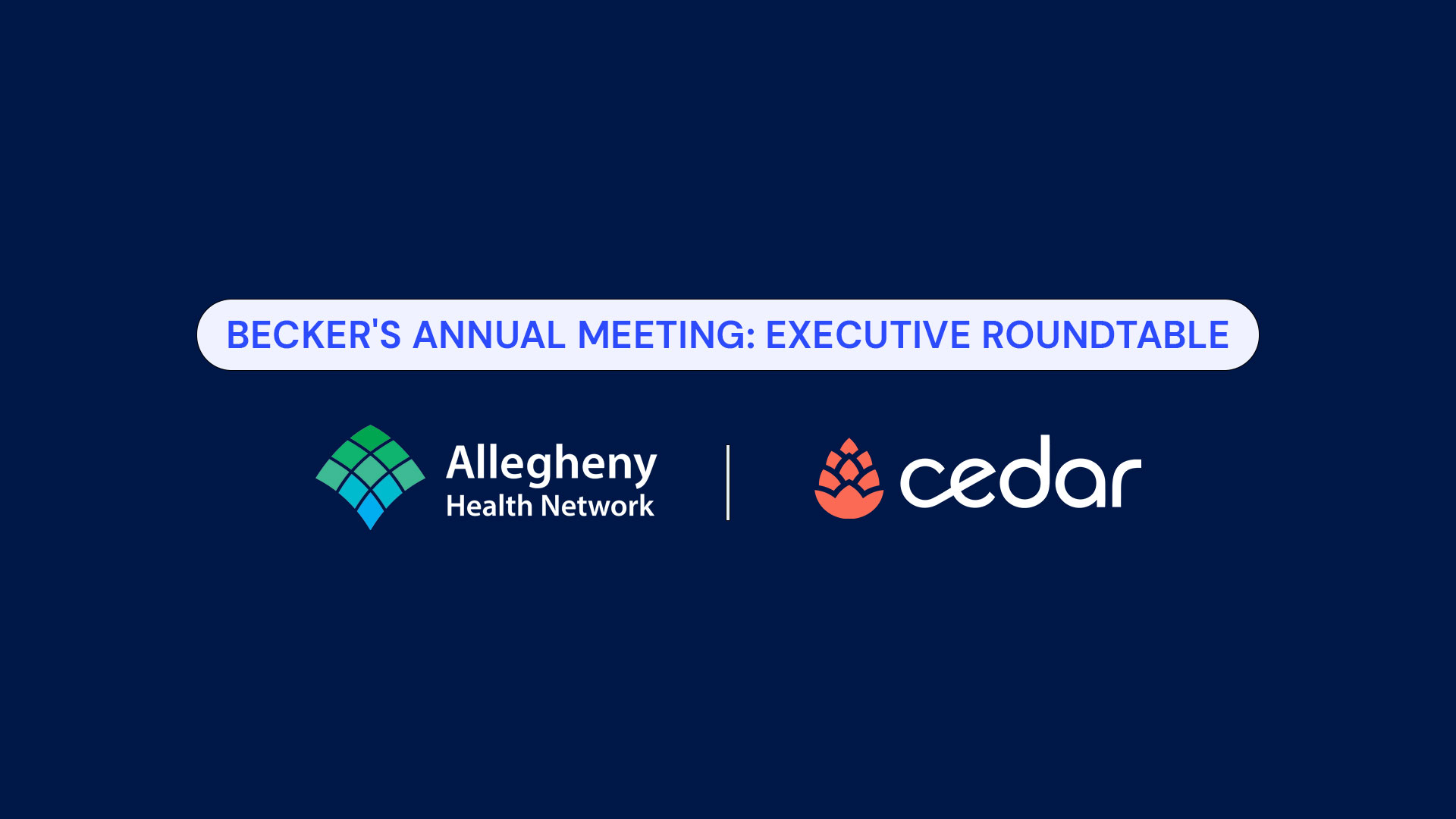Healthcare providers used to be able to rely solely on tried-and-true strategies to achieve growth, such as pursuing M&A to consolidate markets or extend to new markets, building new facilities to expand geographic coverage or acquiring physician groups to increase referrals.
However, these strategies no longer represent the same opportunities for growth, requiring providers to take a step back and evaluate how they are interacting with their most important stakeholder: the consumer.
That’s why Cedar and The Health Management Academy created the Consumer Co-Lab, an experiential learning community for providers to share bold strategies, challenges and opportunities for a better consumer journey. At our inaugural event in October, healthcare executives from more than two dozen Leading Health Systems, representing strategy, operations, finance, digital health and marketing shared how they’re embracing bold strategies to cultivate consumer loyalty.
Consumer-centric experiences are no longer “nice to have,” as hospital financial pressures remain high, and top and bottom line growth now depends on a compelling consumer strategy with digital capabilities. Not only do 57% of consumers say they’d be more likely to recommend their provider if they had a good digital experience, but 70% of consumers rate customer service as more important than even bedside manner. It’s imperative that every touchpoint along the patient journey builds trust and loyalty.
But even if health systems understand that providing a best-in-class experience and cultivating patient loyalty is imperative for success, providers face a myriad of constraints to delivering on consumerism—from creating a comprehensive digital roadmap, to defining scalable, consumer-friendly care models, to deploying the right technology.

Here are the four key takeaways on advancing the consumer experience that health systems need to know:
1. Consider the needs of the healthcare workforce.
With one in five physicians saying it is likely they will leave their current practice within two years, healthcare labor shortages and burnout remain pressing issues. Health systems should take into consideration the impact of new consumer experience initiatives on clinicians, as it will be impossible to deliver a positive experience to patients if their workforce is disengaged or overwhelmed.
2. Invest in personalization—and take inspiration from outside healthcare.
Healthcare lags well behind other industries when it comes to personalization efforts, While health systems may have overarching patient journeys mapped out, they often don’t have the right types of data readily available for in-the-moment decisions on personalizing an individual’s experience—disappointing the 60% of consumers who expect their healthcare digital experience to mirror that of other experiences, such as retail.
3. Don’t be afraid to run counter to traditional health system culture.
While most organizations (85%) are either developing a strategy or working to implement a consumer-first approach, very few (7%) already have a well-formulated and implemented consumer focused strategy. Scaling innovation requires focused effort, outside-the-box thinking and a willingness to fail fast, which is why these initiatives are often most successful when separated from the day-to-day business operations.
4. Industry-standard success metrics present limitations.
Current measurement methodologies like NPS and Press Ganey surveys can give providers some signal into their current consumer experience, but fall short in diagnosing specific strengths and weaknesses. Health systems need a comprehensive indicator: a principled, consistent way to measure the quality of consumer experience delivered.



